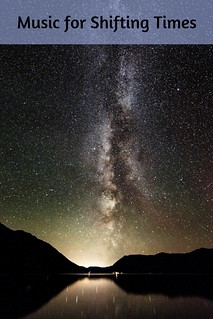Unique Things to See and Do in Iceland
Whether you’re in Iceland on a short layover or for a longer visit, there’s much to see and do in this land of literature, the great outdoors (snorkeling in a tectonic rift!), and history. There's an added bonus for us foodie travelers: the Icelandic cuisine is quite enticing. It’s easy to find cottages in Iceland, and then you’ll have a home base from which to explore.
Here, we’ll focus on geology, history, and nature on the southern coast of Iceland, east of Reyjavik.

Geology
Of course, in a land of ice and stone you are able to learn, firsthand, about volcanoes and earthquakes…
Volcanos!
Where else, but in Iceland, where volcanic eruptions occur around every four years, can you explore an entire volcano CENTER? Head to the new Lava Centre in Hvolsvöllur, “an interactive, high-tech educational exhibition depicting volcanic activity, earthquakes and the creation of Iceland over millions of years.” There’s both an exhibition and a cinema.
http://lavacentre.is

Photo: Lava Centre
There’s also the Eyjafjallajökull Erupts Þorvaldseyri Visitor Center, located on one of the small farms hit hardest by the 2010 eruption. You’ll see exhibits, as well as a film about the eruption and ensuing cleanup and recover.
http://www.icelanderupts.is/
Earthquakes!
You can experience an earthquake yourself (safely!), at the earthquake simulator in Quake 2008, an exhibit in a shopping mall in Hveragerði. Don’t want to experience it yourself? Read about what happened locally when the Richter 6.3 earthquake struck, and see a crack in the floor from the earthquake.
Get Outside and Explore
Iceland is full of interesting geography, including the following:
Fjaðrárgljúfur Canyon
This 2 km long canyon is twisty, deep, and beautiful. The Fjaðrá River runs through it, and you can wade in the shallow river and explore from below, or access the sightlines at the top via a walking path. There may be waterfalls, depending on the time of year. There’s a small parking lot, and the canyon is a few kilometers off the Ring Road (Rt 1). Carved during the Ice Age, you’ll feel like you’re traveling back in time, yourself.

Photo Wikimedia Commons: Photochimp
Reynisfjara and Reynisdrangar
The black sand beach at Reynisfjara is one of the top non-tropical beaches in the world. Besides the incredibly beautiful color and the oddly shaped basalt cliffs and sea caves, there’s another reason to visit – the Reynisdrangar – basalt sea stacks. Thought to be created when trolls dragged a three-masted ship to shore and it turned to stone, it’s worth sitting and dreaming about, on shore.

Photo flickr cc: Henrique Pinto
Icelandic Horses
It seems that Icelandic horses are very popular – not only because they are so beautiful, but also because you can RIDE THEM! There are many, many places to rent horses and/or book a tour, and go for a horseback ride. These horses are famous from ancient times - you may have heard of Sleipnir, Odin’s famous 8 legged horse. This is an interesting way to see the countryside, especially if you are like me and are unable to hike. Thank you, cute (and legendary, but only with 4 legs) Icelandic horses!

History
You know this is my very favorite part of any journey. Here are four incredible, unique ways to learn about Icelandic history...
Skógar Museum
Located off the Ring Road, near the Skógar Waterfall, this popular museum is well worth a visit. There are 6 buildings and 3 museums here, and in it you’ll find over 15,000 regional artifacts. Originally opened in 1949, you’ll also find the museum of transportation and communication here, as well as a souvenir shop and café. My favorite part? The Turf farmhouse, where you can see rooms from the mid-1800s.
http://www.skogasafn.is/en

Photo: Skógar Museum
Saga Center
Located in Hvolsvöllur, the Saga Center showcases one of the most famous Icelandic medieval sagas. You’ll learn much about Icelandic history, including sagas and storytelling, the Viking age (with a Viking longhouse replica), a very cool saga tapestry in progress (spend some time helping with the needlework, and be part of this creation of history!), and an opportunity to dress up in period clothing. Njáls and his family are the center of this saga, and the story takes place from 960-1020.
http://www.njala.is/en/

Photo: njalurefill.is
The town of Skálholt
Skálholt is one of the most important Christian towns in Iceland, as it was the center of ecclesiastical power for hundreds of years. The new cathedral, built in the mid 1900s, holds many historical items, including an old stone coffin dating from 1211 and the first edition of an Icelandic bible (1584). This is also the location of Iceland’s first school (1056). If you’re visiting in July, be sure to make time concerts at the free Summer Music Festival. This festival was founded in 1975 and is Iceland’s oldest summer music festival.

Wikimedia Commons: Ljuba brank
Stöng Commonwealth Farm in Thjórsárdalur
This time, we’ll combine history and volcanos! In 1104, Mout Hekla erupted, destroying many farms in the Þjórsárdalur valley in Árnessýsla. Þjóðveldisbærinn Stöng, one of the farms destroyed, was excavated in 1939. Now, you’ll see a reconstructed medieval Viking farmstead, including a longhouse, built in 1974. How cool is this?
http://www.thjodveldisbaer.is/en/buildings/the-farmhouse/

Photo: thjodveldisbaer.is
Have you explored southern Iceland? What unique things did you see and do?
-

- Log in to post comments



















